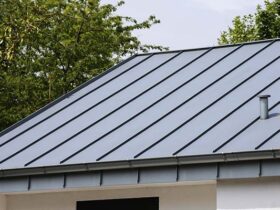Addison, TX has seen a dramatic rise in high-density residential and commercial development over the past two decades. With new apartment buildings, office complexes, and mixed-use developments filling every available parcel, the city is changing fast. But this vertical expansion also brings new vulnerabilities—especially when it comes to managing water damage and emergency cleanup.
In high-density environments, water damage isn’t just about one broken pipe or one flooded room. It’s often about interconnected systems, shared walls, layered infrastructure, and the challenge of accessing the right area before damage spreads. The stakes are higher, and so is the complexity.
This article explores how Addison’s growth affects property owners dealing with water intrusion—and why timing, access, and proper planning now matter more than ever.
Shared Walls, Shared Risks
In apartment buildings and townhomes, walls, ceilings, and even floors are shared between units. When one unit experiences water damage, neighboring units are immediately at risk. Moisture doesn’t recognize property lines—it seeps into whatever material is most porous.
We’ve seen Addison buildings where a single overhead leak from an HVAC system led to four units being affected. Because tenants were on vacation or offices were closed, the damage wasn’t reported in time. That delay turned what could have been a simple extraction job into a mold remediation and drywall replacement project across multiple floors.
Access Delays Multiply Damage
High-density buildings often come with complicated access procedures:
- Elevator-only access to upper floors
- Restricted maintenance hours
- Locked mechanical rooms shared by multiple units
- Delayed keyholder access in commercial spaces
Each minute spent navigating building policies or contacting a property manager is time lost during a critical window. In Addison, where storms can flood basements and burst pipes can happen overnight, every lost hour leads to more material saturation and higher restoration costs.
Vertical Plumbing Risks
Modern developments use vertical plumbing stacks that serve several floors. When a leak or backup occurs on one floor, gravity takes over. Water moves downward through wall cavities and into lower units, often without being noticed until damage appears far below the original source.
In many Addison mid-rises and high-rises, this has led to:
- Undetected mold growth between levels
- Electrical hazards from soaked conduit
- Insurance disputes over multi-unit liability
For owners of condos, office suites, or retail units, the impact isn’t always caused by their own systems—but they’re still responsible for part of the cleanup.
Parking Garages and Lower-Level Flooding
Subterranean parking garages and basements are staples of high-density construction. Unfortunately, they are also magnets for water accumulation during storms.
In many Addison complexes, poor drainage design or clogged sump pumps have resulted in flooded garages, damaged storage units, and electrical panel failures. Because these areas are often low-priority during early development, property owners are left footing the bill when heavy rains overwhelm the system.
HVAC Systems and Shared Infrastructure
Multi-tenant buildings typically share HVAC infrastructure. When a system leaks or a condensate line clogs, the water doesn’t just stay put. Ceiling tiles, insulation, and ducts become saturated—sometimes dripping into common spaces, hallways, or server rooms.
In Addison offices and residential towers, this has resulted in surprise shutdowns, expensive data losses, and tenant complaints that escalate into liability claims.
Why Cleanup Isn’t Straightforward in High-Density Settings
Water cleanup in high-density developments requires a level of coordination most property owners aren’t prepared for:
- Coordinating between building managers and restoration crews
- Navigating tenant rights and privacy rules
- Securing elevator access for equipment
- Managing multiple stakeholders (insurance, HOA, vendors)
This complexity often delays action—even when a crew is standing by. That delay means higher costs and bigger disruptions for tenants and business operations.
The Financial Ripple Effect
Delayed cleanup doesn’t just mean higher repair bills. In Addison’s competitive property market, water damage can lead to:
- Rental loss from uninhabitable units
- Tenant turnover due to dissatisfaction
- Insurance rate increases or dropped policies
- Brand damage for commercial landlords and building managers
A slow response doesn’t just hurt the building—it erodes your property’s reputation and market value.
The Right Response Plan for Addison Buildings
Every multi-tenant property in Addison should have a water emergency plan that includes:
- Designated water shutoff protocols
- Pre-approved restoration vendors with after-hours access
- Tenant communication templates for rapid alerts
- Annual inspections of plumbing and drainage systems
Preparedness makes a measurable difference when minutes count.
One Keyword, One Reality
If you’ve ever searched water damage cleanup near me during an emergency, you know the urgency that comes with that moment. But in a city like Addison, proximity isn’t enough. You need a response team that understands how to work in dense, complex properties where time, access, and communication are everything.
Final Thoughts
High-density living has its perks—walkability, convenience, and community. But it also comes with shared risks that traditional suburban properties don’t face. Water damage in Addison’s newer developments requires faster decisions, better coordination, and a full understanding of how one small leak can spread through an entire building.
If you own or manage property in Addison, don’t wait for a water emergency to learn how vulnerable your infrastructure really is. Plan now, respond fast, and choose partners who understand the pace and precision high-density buildings demand.
Because in water damage scenarios, complexity isn’t the problem—delay is.





